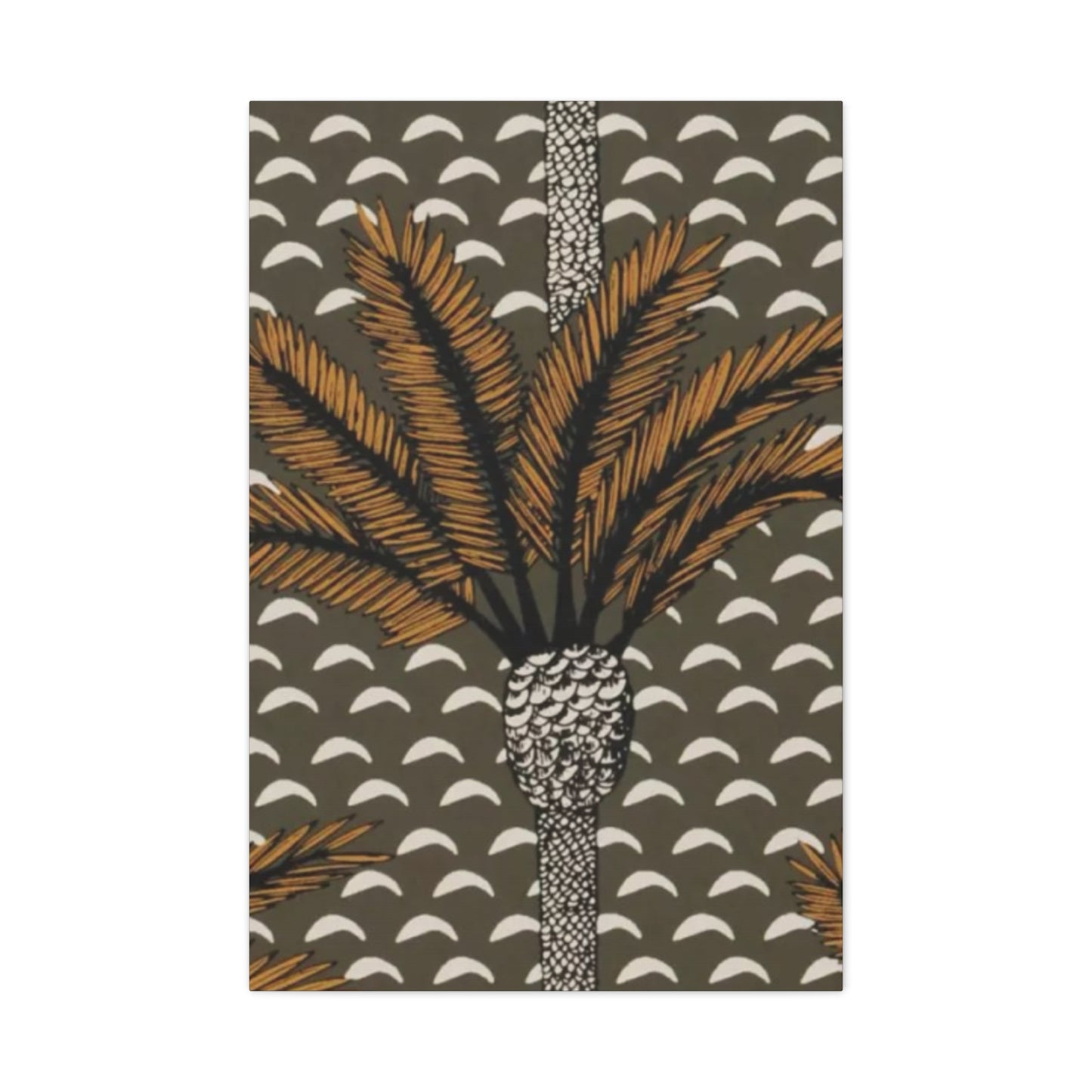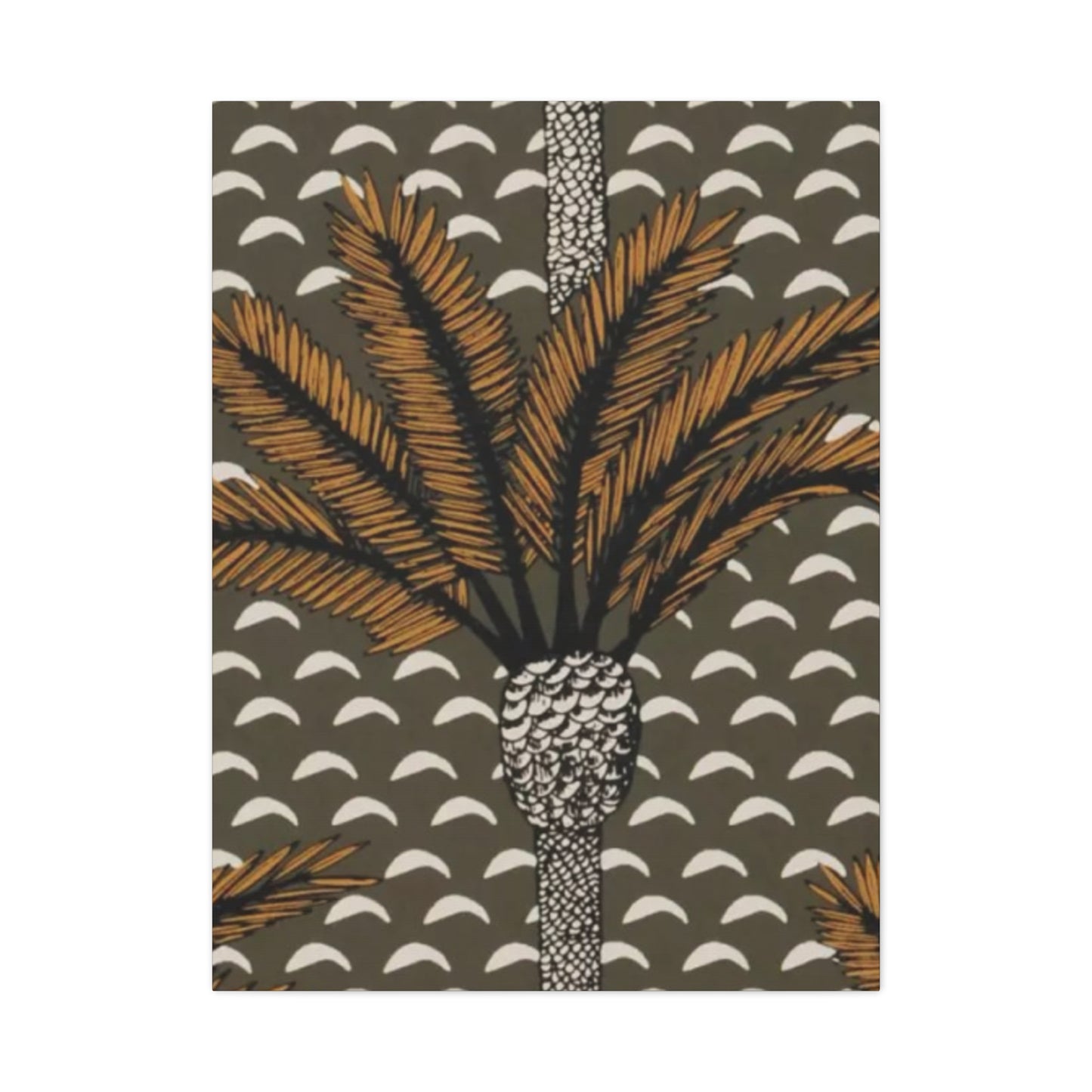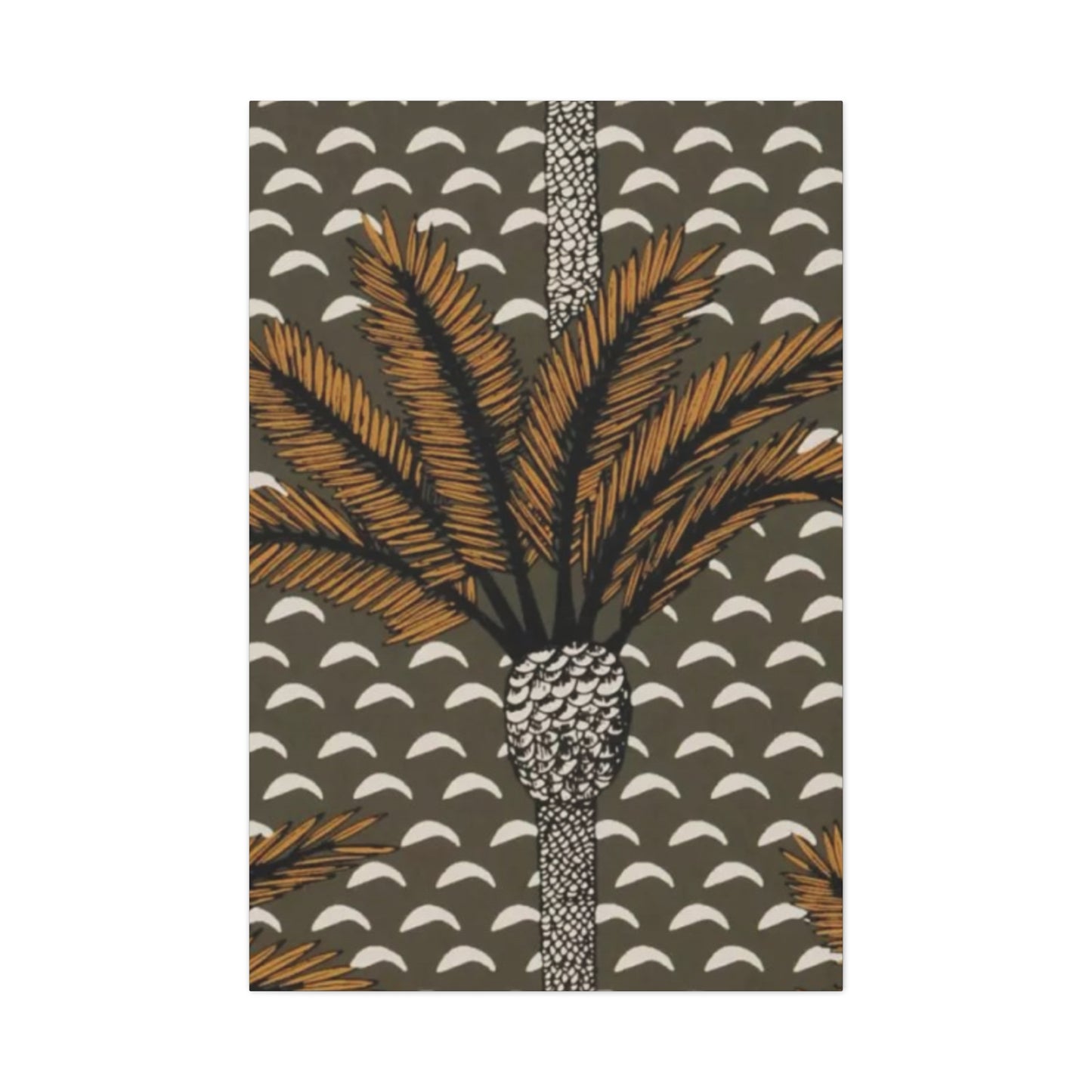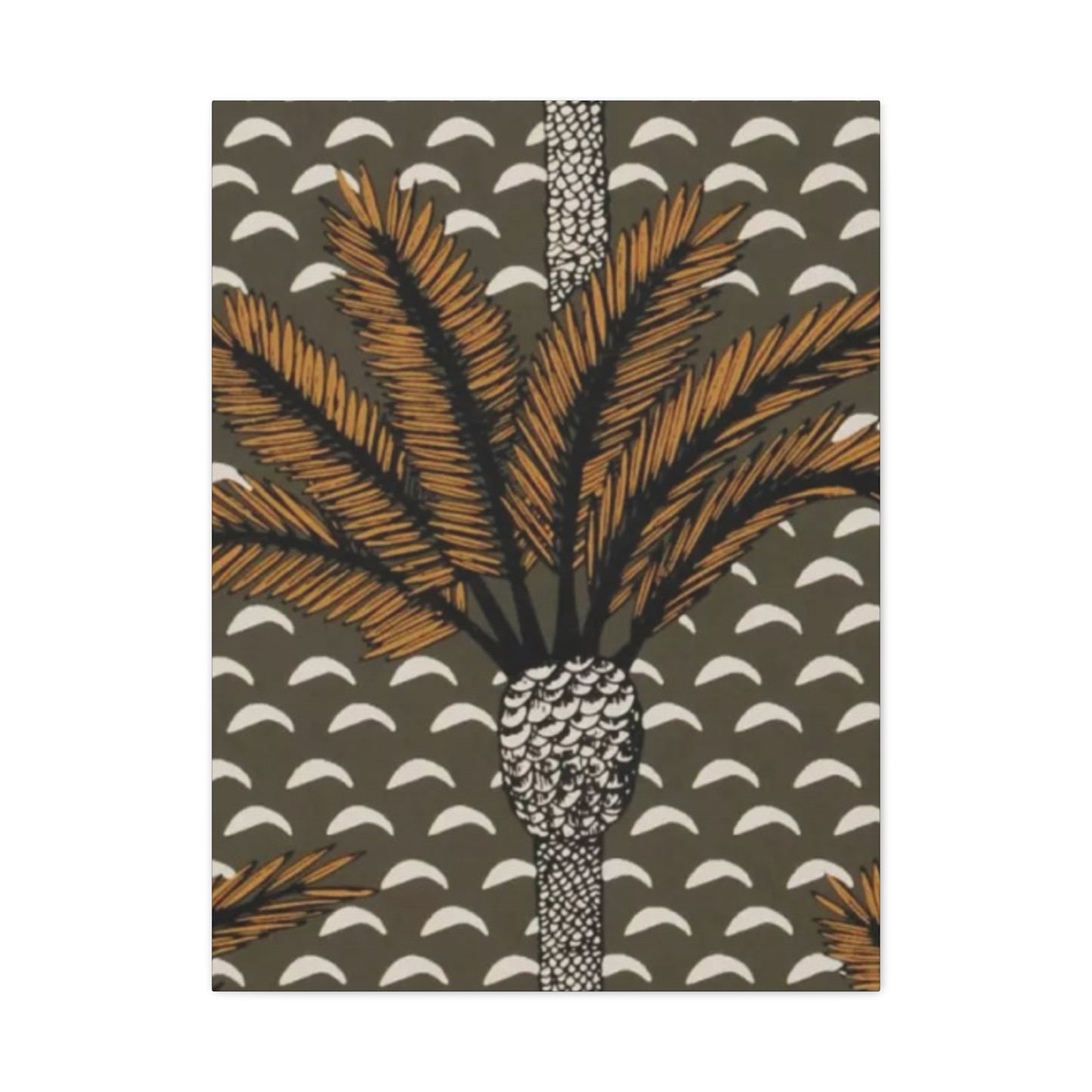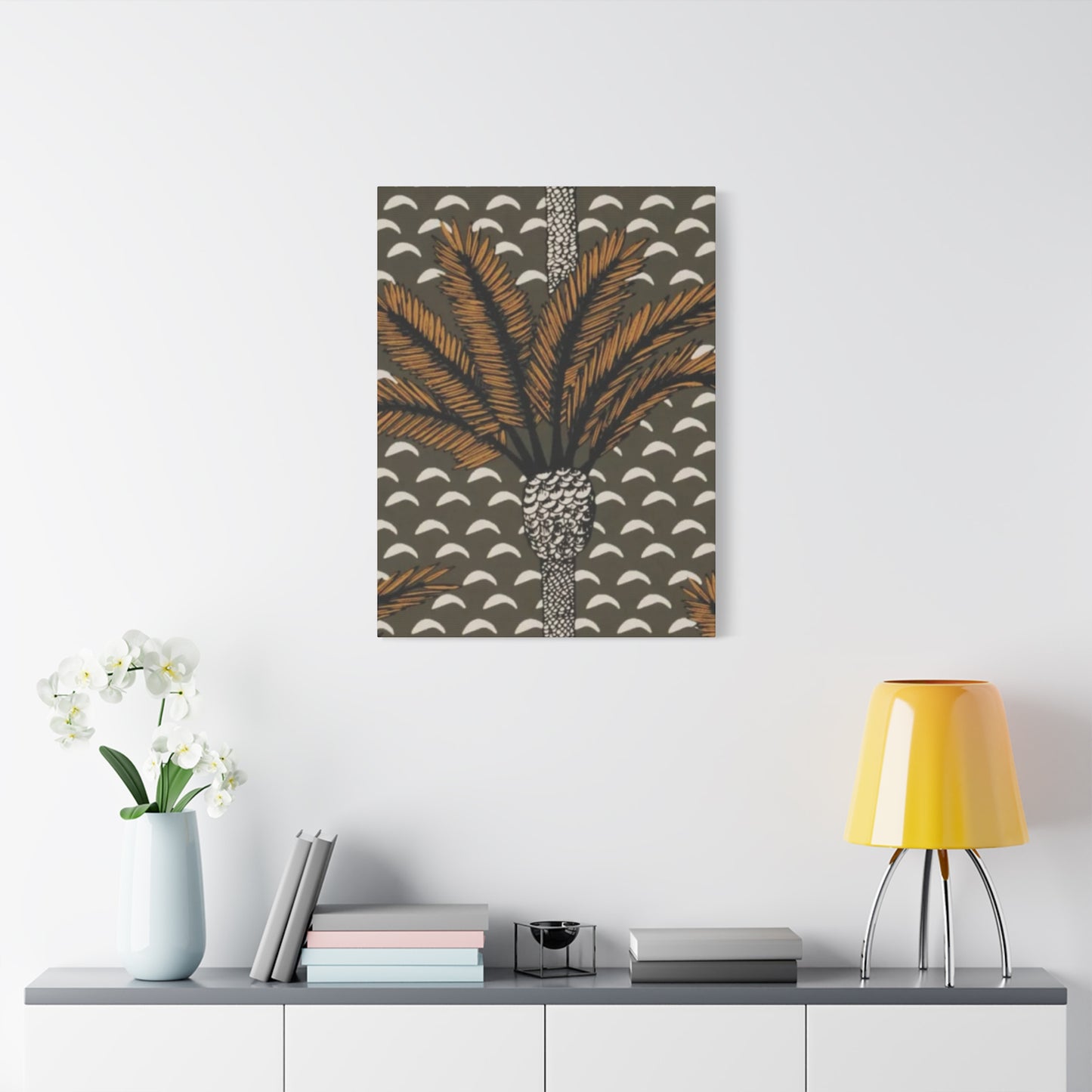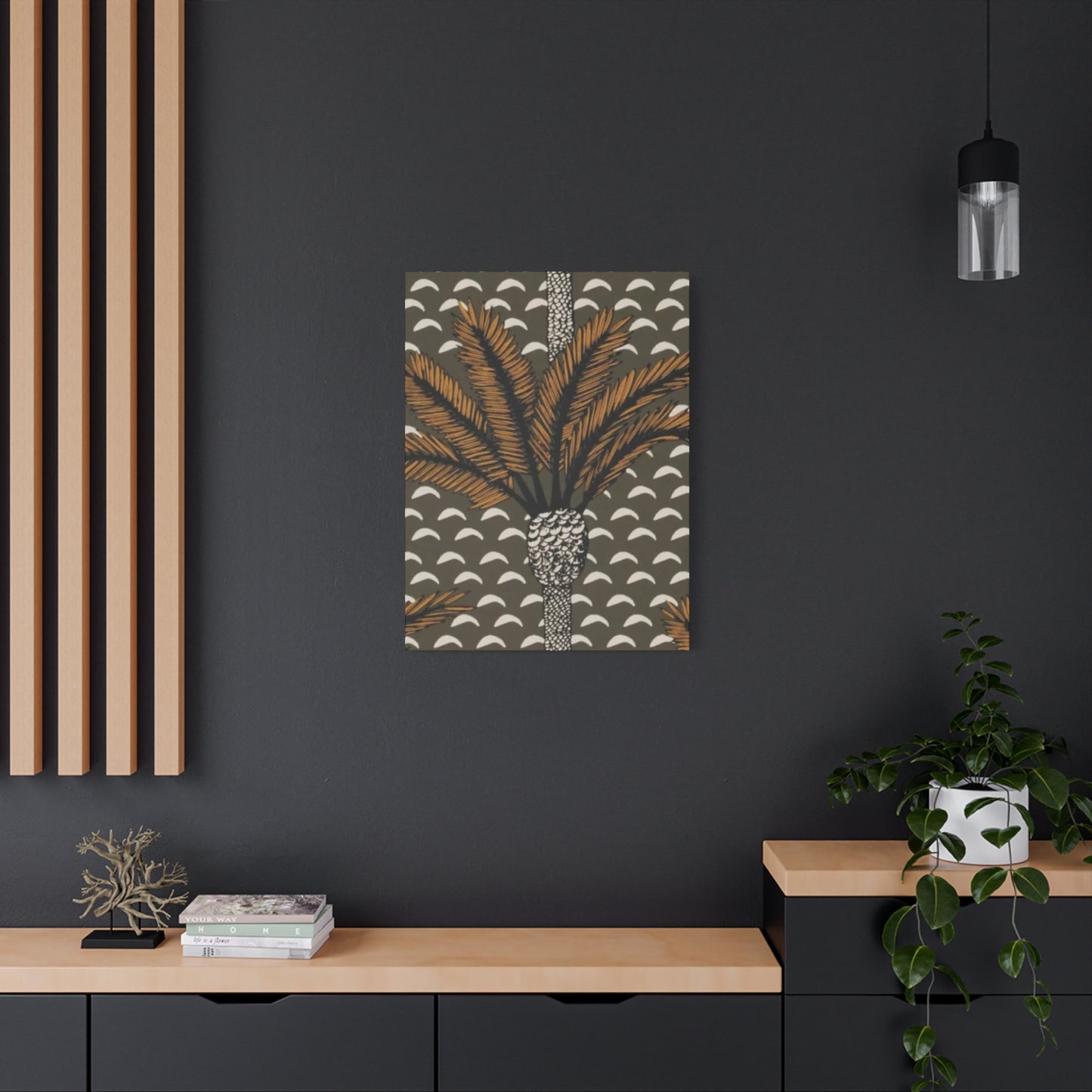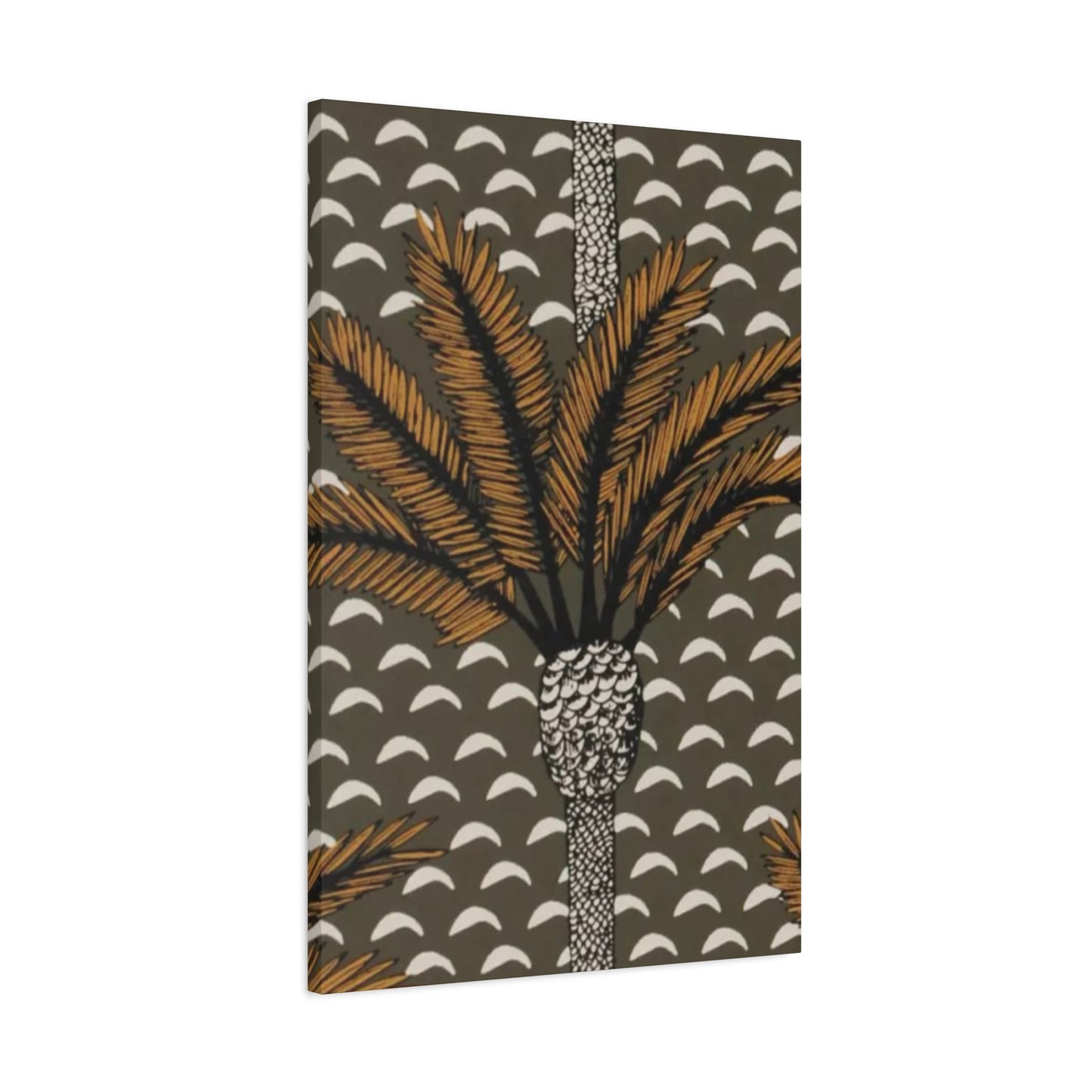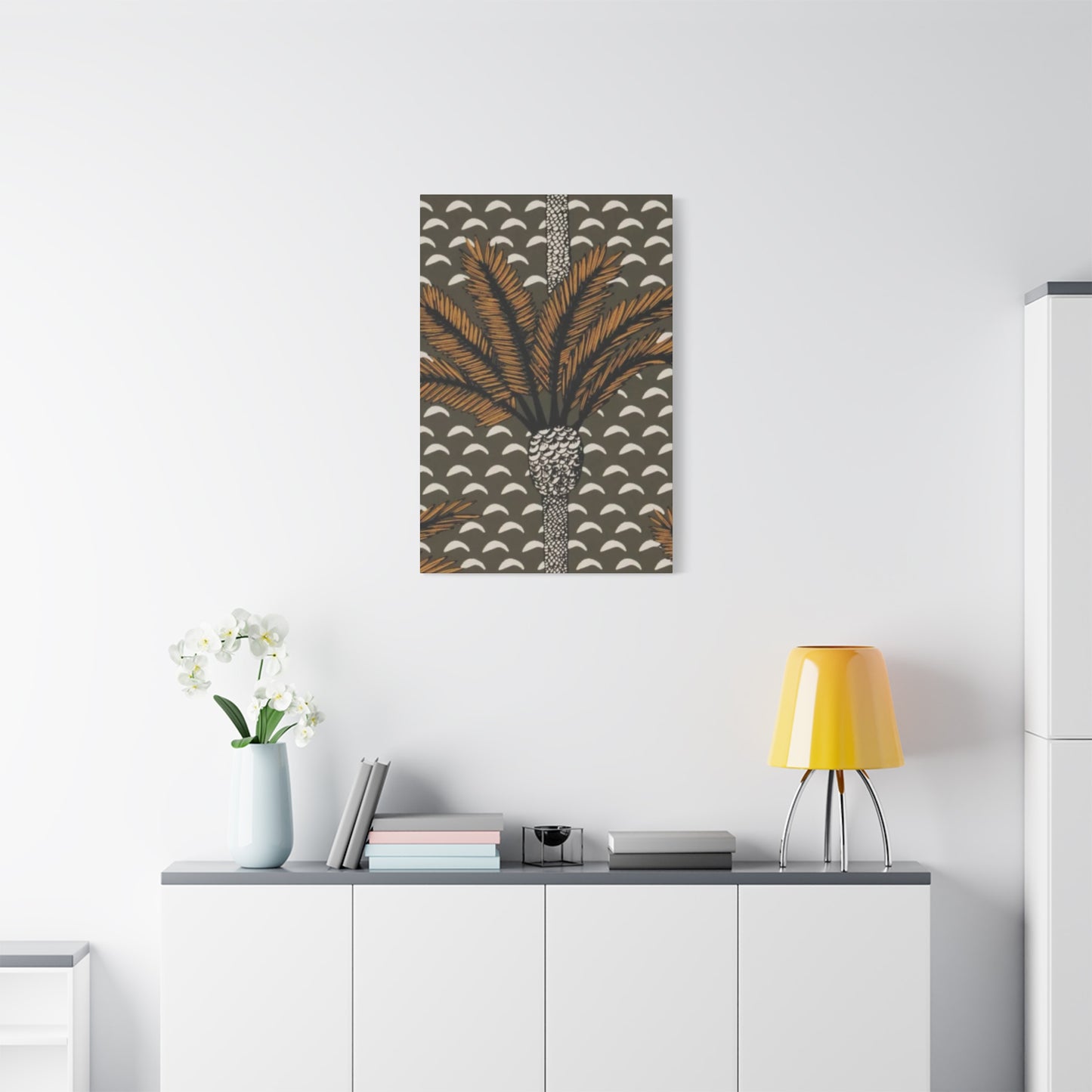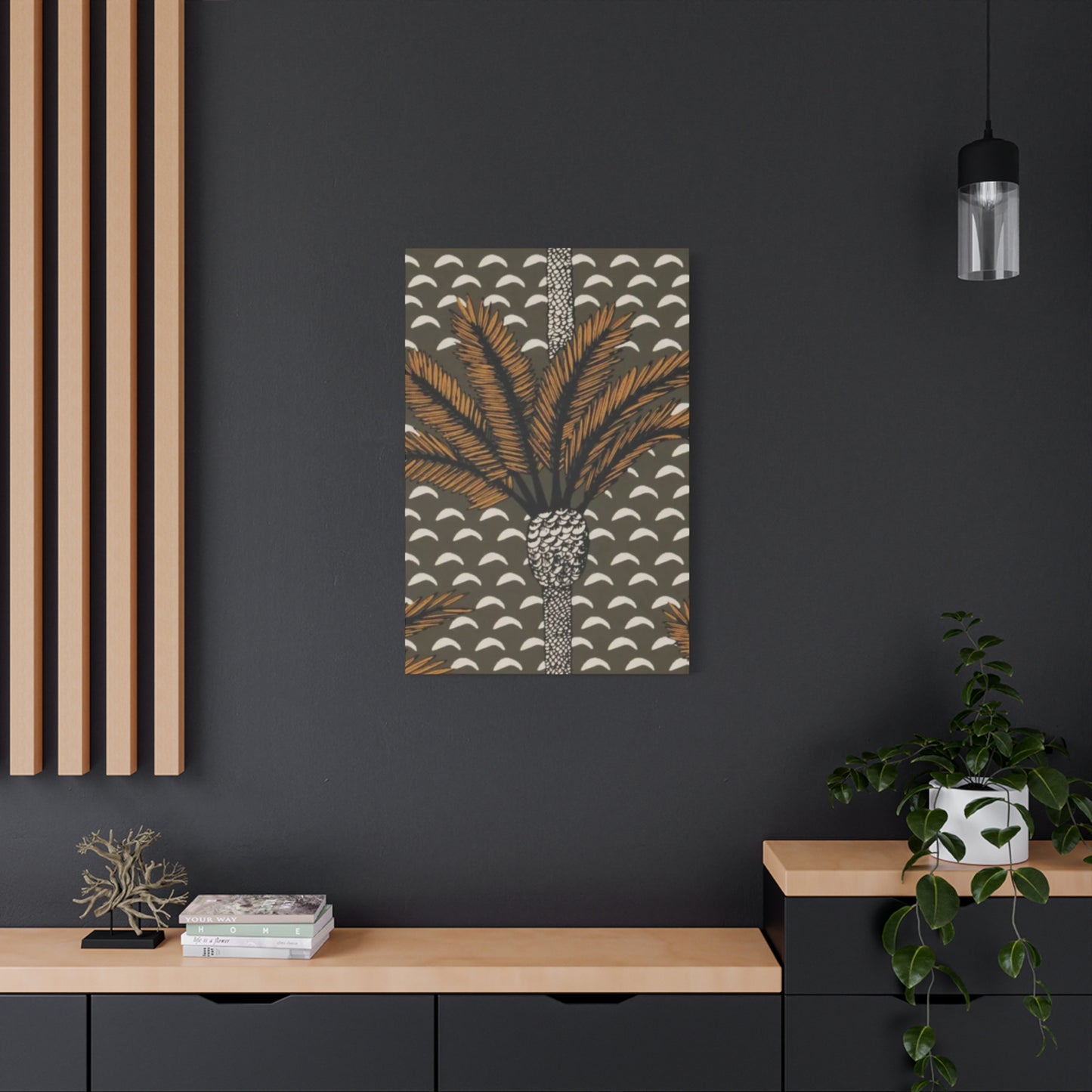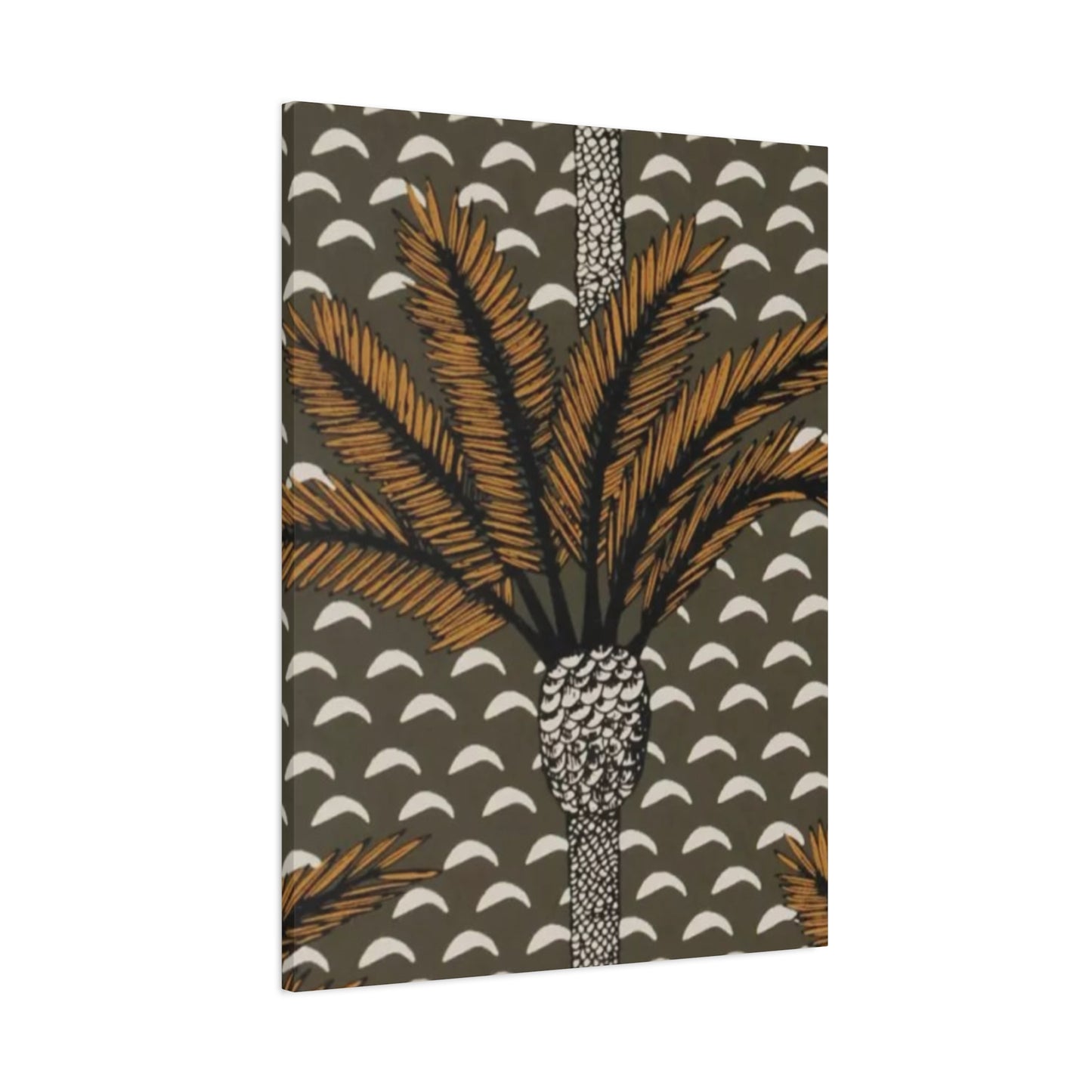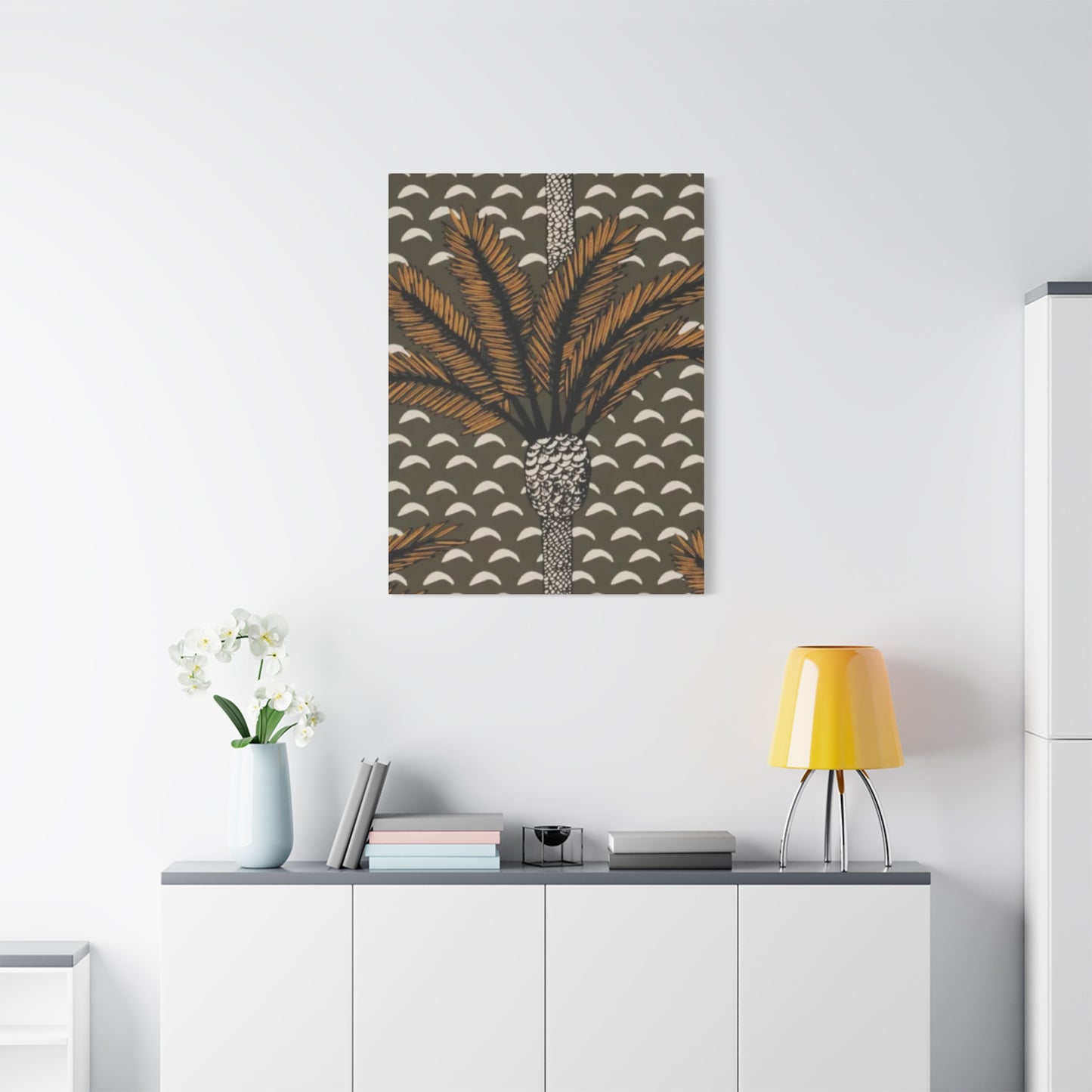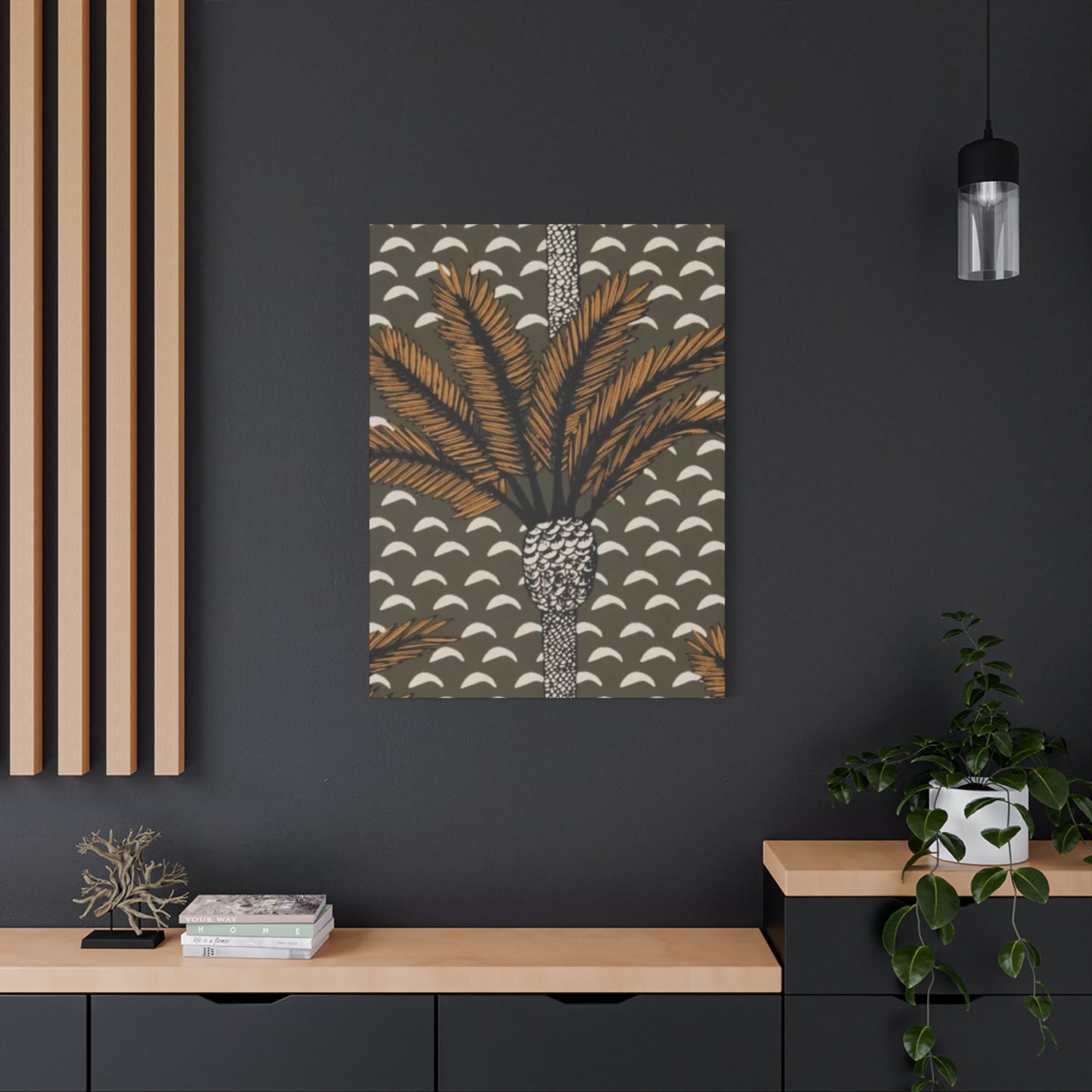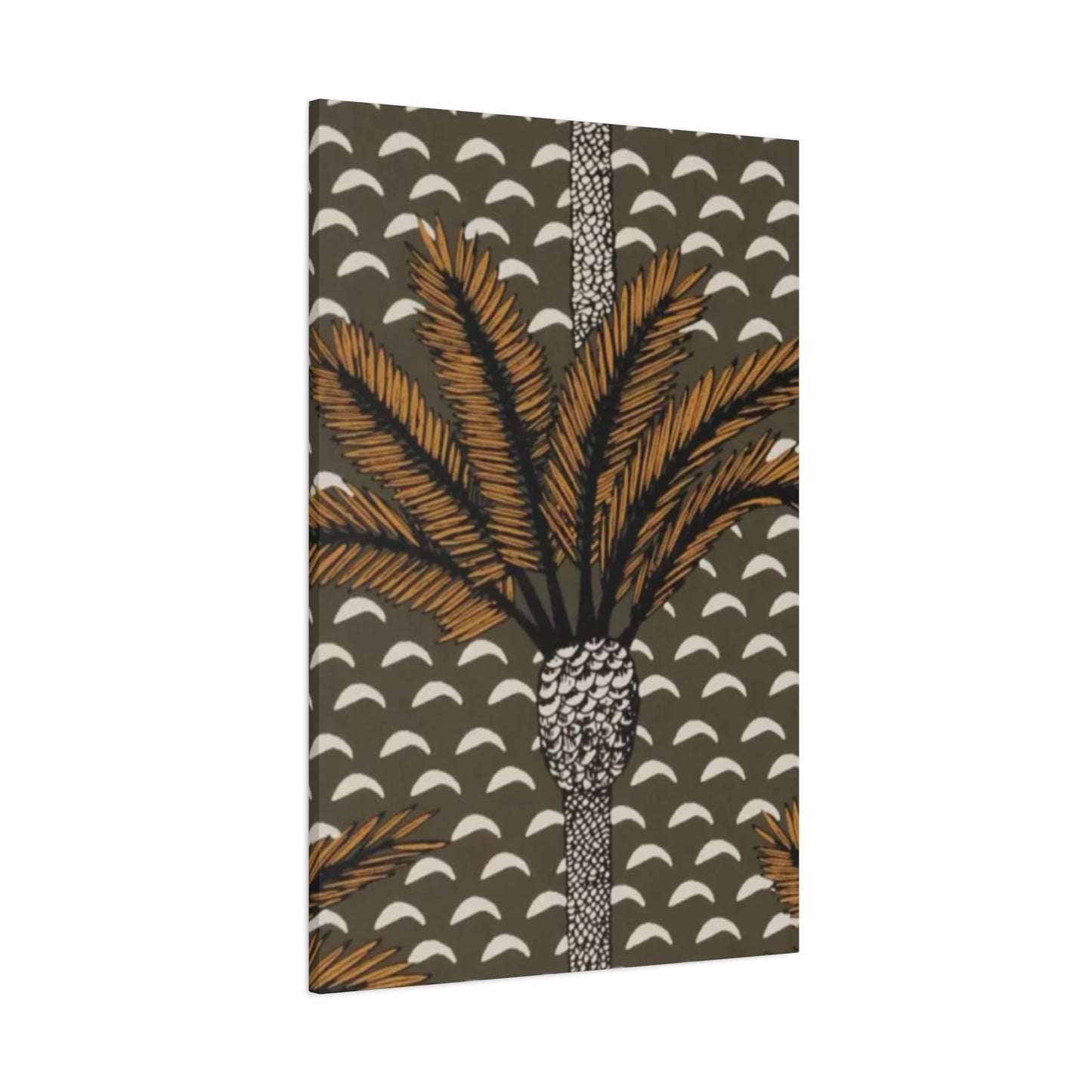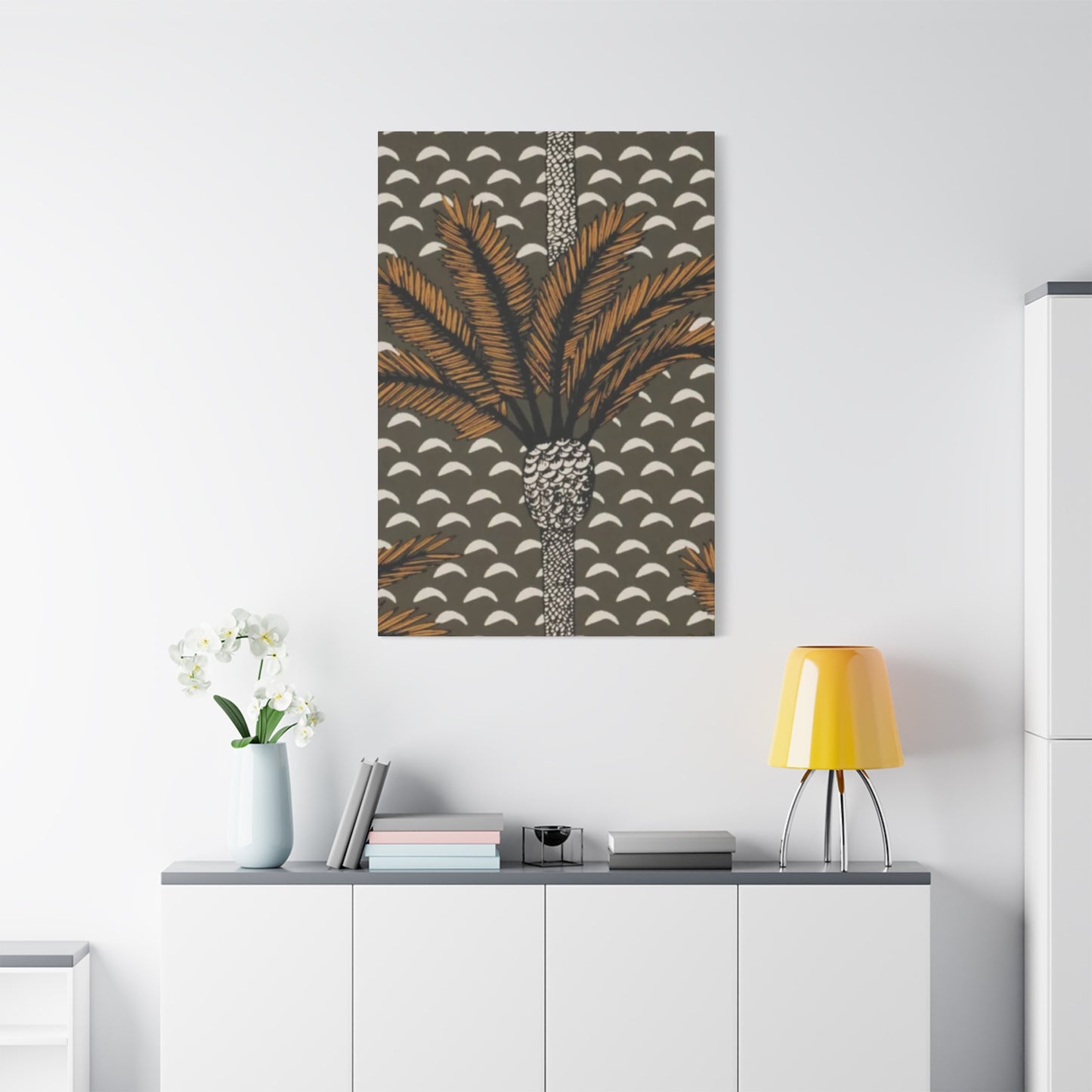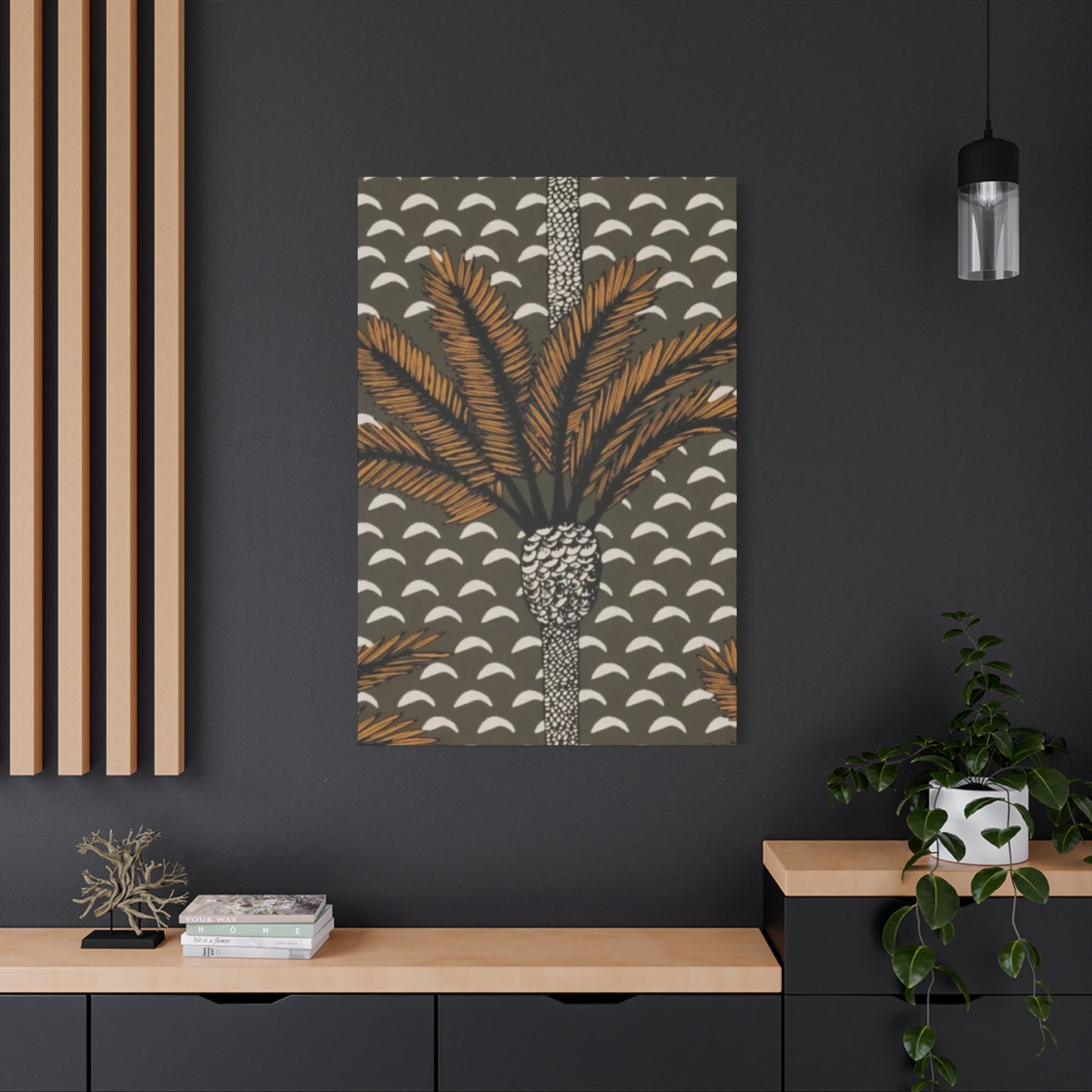Rustic Palm Elegance: Brown Leaves Wall Art Inspired by Nature
The allure of nature-inspired decor has captivated interior design enthusiasts for generations, and among the most sophisticated choices available today is the incorporation of brown palm leaf art into residential and commercial spaces. This distinctive form of botanical decoration brings together the raw beauty of tropical vegetation with the comforting warmth of earthy color palettes, creating environments that feel both grounded and elegantly refined. As homeowners and designers increasingly seek ways to connect indoor spaces with the natural world, the subtle sophistication of brown-toned palm imagery has emerged as a versatile solution that transcends temporary trends while maintaining enduring aesthetic appeal.
Unlike their vibrant green counterparts, brown palm leaf representations offer a more subdued, contemplative presence that harmonizes beautifully with a wide range of interior styles. From contemporary minimalist apartments to traditional country homes, these pieces provide visual interest without overwhelming a space. The natural aging process of palm fronds creates intricate patterns, delicate textures, and subtle color variations that photographers, illustrators, and painters have long celebrated as subjects worthy of artistic interpretation. When translated into wall art, these characteristics become focal points that invite closer inspection while maintaining a sense of calm sophistication.
The popularity of this particular aesthetic reflects a broader cultural movement toward biophilic design principles, which emphasize the human need for connection with natural elements within built environments. Research has consistently demonstrated that incorporating nature-inspired imagery into interior spaces can reduce stress levels, improve concentration, and enhance overall well-being. Brown palm leaf art serves this purpose exceptionally well, offering the psychological benefits of natural imagery while providing a color scheme that feels inherently warm and welcoming. The neutral tones work seamlessly with existing color palettes, making these pieces remarkably adaptable to various design contexts.
Brown Palm Leaves Wall Art for Warm Interiors
Creating inviting, comfortable living spaces requires careful attention to both color selection and decorative elements, and brown palm leaves wall art excels at fulfilling both requirements simultaneously. The rich spectrum of brown tones found in naturally aged palm fronds ranges from golden honey to deep chocolate, providing designers with a versatile palette that complements warm interior schemes effortlessly. When selecting pieces for spaces decorated in cream, beige, terracotta, or amber tones, brown palm leaf art acts as a unifying element that ties together various design components while adding sophisticated visual interest.
The psychological impact of warm color schemes has been extensively documented in environmental psychology research. Spaces decorated in warm tones tend to feel more intimate and welcoming, encouraging relaxation and social interaction. Brown palm leaf artwork amplifies these effects by introducing organic shapes and natural textures that soften the potentially harsh lines of modern architecture and furniture. The gentle curves of palm fronds create visual flow that guides the eye through a space, while the varied textures visible in quality prints or paintings add dimensional interest that flat-colored walls cannot provide.
When incorporating brown palm leaf wall art into warm interiors, scale considerations become particularly important. Larger pieces work beautifully as statement focal points above sofas, beds, or dining tables, commanding attention while maintaining the calm, grounded feeling that characterizes successful warm interiors. Smaller pieces can be grouped in gallery wall arrangements, creating visual rhythm through repetition of botanical themes while allowing for variation in framing styles, sizes, and specific palm species depicted. The key to successful implementation lies in balancing the organic, irregular forms of palm leaves with the geometric structure of wall spaces and furniture arrangements.
Lighting plays a crucial role in maximizing the impact of brown palm leaf art within warm interiors. Natural daylight brings out the subtle color variations within the artwork, highlighting golden undertones during morning hours and emphasizing richer, deeper browns as afternoon progresses into evening. Artificial lighting should be carefully considered to avoid washing out the nuanced tones that make these pieces special. Warm-toned LED fixtures or traditional incandescent lighting preserves the cozy atmosphere while ensuring the artwork remains visually engaging throughout the day. Directional spotlights can create dramatic effects by emphasizing texture and creating shadows that add depth to the displayed pieces.
Rustic Palm Tree Leaf Prints
The intersection of rustic design aesthetics and tropical botanical imagery creates a fascinating design territory that rustic palm tree leaf prints occupy with distinctive character. Traditional rustic style emphasizes natural materials, visible textures, and a sense of lived-in comfort that stands in philosophical opposition to overly polished or formal design approaches. Palm tree leaf prints, when rendered in styles that emphasize their natural characteristics rather than idealized representations, fit seamlessly into this design philosophy by celebrating the inherent beauty of organic decay, weathering, and imperfection.
Rustic palm tree leaf prints typically showcase specimens in various stages of their lifecycle, capturing the journey from fresh vitality through gentle aging to eventual decomposition. This honest portrayal of natural processes resonates with rustic design principles that value authenticity and connection to the land. The prints may feature torn edges, spotted surfaces, and irregular coloration that many conventional botanical prints would edit out or minimize. In rustic contexts, however, these characteristics become assets that communicate genuine connection to nature rather than sanitized, idealized versions of it.
The production methods for rustic palm tree leaf prints often reflect the aesthetic values they embody. While digital photography and printing technologies enable high-quality reproduction, many artists working in this genre incorporate analog techniques that introduce subtle imperfections and variations. Handmade paper stocks with visible fibers and irregular edges, printing processes that allow for slight color variations between editions, and finishing techniques that add texture or patina all contribute to the rustic character of these prints. Some artists even incorporate actual botanical materials into the printing process, creating unique pieces that blur the line between print and mixed-media artwork.
Within rustic interior contexts, palm tree leaf prints contribute to narratives about place and memory. A well-selected print can evoke memories of travels to tropical destinations, creating visual anchors for stories and experiences. The juxtaposition of tropical subject matter with rustic presentation styles creates interesting tensions that spark conversation and reflection. A weathered palm frond print displayed in a mountain cabin or rural farmhouse brings exotic elements into familiar contexts, expanding the space's visual vocabulary while maintaining the unpretentious comfort that defines rustic interiors.
The color palette of rustic palm tree leaf prints extends beyond simple brown tones to encompass the full range of colors present in aging botanical materials. Subtle greens fade into yellows, oranges emerge along drying edges, and gray tones appear where moisture and time have worked their transformative magic. This complex color story provides surprising versatility when coordinating with rustic interiors that may incorporate weathered wood in various tones, aged metals with natural patina, and textiles in both natural and faded colors. The prints serve as bridge elements that can pull together disparate colors within a space.
Scale and proportion considerations for rustic palm tree leaf prints differ somewhat from more formal botanical art. The rustic aesthetic often embraces asymmetry and unexpected juxtapositions, allowing for creative approaches to display that might seem unconventional in more traditional settings. Oversized prints that dominate entire wall sections make bold statements appropriate to the unpretentious confidence of rustic design. Conversely, collections of small prints in mismatched frames can create gallery walls that feel organic and accumulated over time rather than carefully curated in a single shopping trip.
Close-Up of Brown Palm Leaves on Canvas
The artistic choice to present brown palm leaves through close-up perspectives on canvas creates powerful opportunities for viewers to experience familiar natural forms in entirely new ways. When photographers or painters move their focus to intimate distances, the broad, recognizable shape of palm fronds gives way to abstract compositions of line, texture, and subtle color variation. These close-up representations transform botanical subjects into studies of form and pattern that can stand alongside purely abstract artwork while retaining their connection to the natural world.
Canvas as a display medium brings specific qualities that enhance close-up brown palm leaf imagery. Unlike paper prints behind glass, canvas presentations offer texture that complements the subject matter, with the woven surface creating subtle visual interest that interacts with the printed or painted image. Gallery-wrapped canvases, where the image continues around the edges of the stretcher frame, create object-like presence that protrudes slightly from the wall, casting shadows and occupying space in ways that flatter wall art cannot achieve. This dimensional quality makes canvas presentations particularly effective in contemporary and transitional interior styles.
The artistic interpretation of brown palm leaves in close-up reveals details invisible to casual observation. Individual fibers become visible as delicate lines running the length of each frond segment. The intersection points where these fibers meet the central spine create geometric patterns with mathematical precision. Surface textures range from smooth, almost waxy areas to rough, fibrous sections where the leaf structure has begun breaking down. Color transitions happen in gradual gradients or sudden shifts depending on the specific conditions that affected each leaf during its life and aging process.
Photographers working with close-up brown palm leaf subjects face technical challenges that, when successfully overcome, result in images of remarkable depth and detail. Depth of field decisions determine whether the entire leaf surface maintains sharp focus or whether selective focus draws attention to specific areas while allowing others to drift into soft, abstract blur. Lighting choices dramatically affect the final image, with side lighting emphasizing texture through shadow, backlighting revealing translucent qualities and internal structures, and diffused lighting presenting even, detailed views of surface characteristics. These technical decisions become aesthetic choices that shape how viewers experience the finished canvas.
For painters working in close-up perspectives, brown palm leaves offer subjects that balance structure and freedom. The regular, repeated patterns of leaf segments and fibers provide organizational frameworks that can be rendered with precision or interpreted more loosely depending on the artist's approach and medium. Watercolor treatments might emphasize translucency and fluid color transitions. Oil paintings could build rich surface textures that mirror the tactile qualities of actual palm leaves. Acrylic techniques offer versatility for artists who wish to combine precise detail rendering with more expressive, gestural passages within the same composition.
The scale at which close-up brown palm leaf images are printed or painted onto canvas significantly impacts their effectiveness in interior spaces. Relatively small canvases maintain intimate, contemplative qualities appropriate for personal spaces like bedrooms, bathrooms, or reading nooks. Medium-sized pieces work well in dining rooms, home offices, or as parts of gallery wall arrangements. Large-scale presentations transform close-up details into commanding focal points suitable for living rooms, entryways, or commercial spaces where they can be viewed from distances that reveal the full composition while also rewarding closer inspection of details.
Earthy Tones in Palm Leaf Wall Decor
The concept of earthy tones encompasses a rich spectrum of colors drawn directly from the natural landscape, including various browns, greens, tans, creams, and grays that ground interior spaces in organic warmth and timeless appeal. Palm leaf wall decor rendered in earthy tones creates particularly effective connections between indoor environments and the natural world, offering visual references to soil, stone, bark, and vegetation that humans have found comforting throughout evolutionary history. This color palette's psychological effects include feelings of stability, safety, and calm that make earthy-toned palm leaf art especially valuable in spaces intended for relaxation and restoration.
Within the category of earthy tones, brown palm leaf wall decor occupies a sweet spot that balances tropical associations with grounded, accessible aesthetics. The colors present in dried or aging palm fronds naturally fall within earth tone ranges, requiring no artificial manipulation to achieve the desired palette. This authenticity ensures that the artwork maintains visual credibility, avoiding the artificial appearance that can result when naturally bright subjects are forcibly muted to fit design trends. The organic origin of these colors means they coordinate effortlessly with other natural materials commonly found in interiors, including wood, stone, leather, and natural fiber textiles.
The versatility of earthy-toned palm leaf wall decor extends across multiple design styles, each interpreting the palette according to its own aesthetic priorities. Scandinavian design approaches these tones with characteristic restraint, favoring lighter browns, tans, and creams that maintain the bright, airy feeling essential to Nordic interiors. Mediterranean styles embrace richer, more saturated earth tones including terracotta browns and sun-bleached tans that evoke coastal landscapes. American Southwestern design incorporates palm leaf art in colors that echo desert soils and weathered stone. Asian-influenced interiors may select pieces emphasizing the subtle gray-browns found in natural materials like bamboo and unglazed ceramics.
Creating cohesive color stories with earthy-toned palm leaf wall decor involves considering the undertones present in both the artwork and surrounding design elements. Warm earth tones with yellow or orange undertones pair naturally with honey-toned woods, brass fixtures, and textiles in cream, caramel, or rust. Cool earth tones with gray or blue undertones harmonize with weathered woods, iron or pewter metals, and fabrics in taupe, mushroom, or slate. Mixing warm and cool earth tones within a single space creates visual interest and prevents the palette from feeling monotonous, with palm leaf artwork serving as an ideal element for introducing subtle temperature variations.
The layering of different earthy tones through palm leaf wall decor and other design elements builds sophisticated interiors with depth and dimension. Rather than matching all browns exactly, successful schemes incorporate variety within the earth tone family, perhaps pairing light tan palm leaf prints with medium brown leather furniture and dark chocolate wood flooring. This approach creates visual hierarchy and prevents the flattening effect that can occur when all elements maintain identical color values. The palm leaf artwork contributes to this layering through its own internal color variations, with individual pieces typically containing multiple earth tones within their compositions.
Textured Brown Palm Leaves Photography
The photographic capture of textured brown palm leaves represents a specialized genre within nature photography that prioritizes surface qualities, fine details, and tactile visual information over broad compositional elements. Photographers working in this mode employ technical skills and artistic vision to reveal the extraordinary complexity present in what casual observers might dismiss as dead or dying vegetation. Through careful lighting, precise focus control, and thoughtful composition, these artists transform simple palm fronds into subjects worthy of sustained attention and aesthetic appreciation.
Technical considerations dominate the creation of successful textured brown palm leaves photography. Macro photography techniques, which enable extreme close-up views with high magnification ratios, reveal details completely invisible to unaided human vision. Individual fibers become apparent as distinct structures, surface irregularities create miniature landscapes of peaks and valleys, and color variations that appear uniform from normal viewing distances resolve into complex patterns of shifting hues. The depth of field challenges inherent in macro photography require careful aperture selection and often focus stacking techniques where multiple images captured at different focus points are combined to create impossibly sharp final images.
Lighting approaches for textured brown palm leaves photography dramatically influence the final image character. Harsh, direct lighting creates strong shadows that emphasize three-dimensional texture but may obscure color subtleties through extreme contrast. Diffused lighting from overcast skies or photographic softboxes reveals color and fine detail but may flatten texture by eliminating the shadows that give depth perception. Side lighting at acute angles creates dramatic raking light that emphasizes every surface irregularity while creating strong directional movement within compositions. Backlighting reveals translucent qualities in thinner leaf sections while creating silhouettes of thicker structural elements. Skilled photographers often combine multiple lighting approaches within single images or across series to fully explore their subjects' visual potential.
The selection of specific palm leaves for textured photography requires discrimination and patience. Not every brown palm frond offers equally compelling photographic opportunities. Photographers search for specimens displaying interesting decay patterns, unusual color variations, or particularly pronounced textural qualities. Leaves damaged by insects create organic holes and irregular edges that add visual interest. Fungal growth introduces unexpected colors and patterns. Mechanical damage from wind or handling creates tears and splits that reveal internal leaf structure. The most successful textured brown palm leaves photography often features specimens that have experienced complex natural histories visible through their physical characteristics.
Autumn-Inspired Palm Leaf Wall Art
The conceptual marriage of autumn aesthetics with palm leaf imagery creates an intriguing design territory that challenges conventional associations while opening new creative possibilities. Traditional autumn decor draws heavily on imagery of deciduous trees losing their leaves, harvest abundance, and the transition toward winter dormancy. Palm trees, as predominantly tropical and subtropical species, rarely factor into autumn narratives despite the fact that their leaves undergo aging processes that produce colors remarkably compatible with fall palettes. Autumn-inspired palm leaf wall art bridges these conceptual categories, offering seasonal relevance without abandoning year-round tropical elegance.
The color palette of autumn-inspired palm leaf wall art emphasizes the warm browns, golds, oranges, and rust tones that characterize fall foliage in temperate climates. Aging palm fronds naturally develop many of these colors as chlorophyll breaks down and other pigments become visible. The golden yellow that appears along drying frond edges closely matches the color of autumn aspens and birches. The deep russet browns of older palm leaves echo the colors of oak leaves after first frost. By selecting palm leaf imagery in these particular color ranges and perhaps enhancing them slightly through artistic interpretation or photographic processing, creators produce artwork that feels seasonally appropriate while maintaining botanical accuracy.
Artistic treatments that emphasize autumn connections in palm leaf wall art might incorporate additional seasonal elements into compositions. Dried grasses, seed heads, or other botanical materials associated with fall harvest could appear alongside palm fronds in mixed-media works or styled photography. Color grading in photographic prints might be adjusted to emphasize warm, golden tones that evoke autumn sunlight filtering through falling leaves. Painted interpretations could incorporate techniques associated with autumn landscape painting, including loose, impressionistic brushwork and emphasis on atmospheric effects. These artistic choices create explicit seasonal connections while allowing the inherent beauty of palm forms to shine through.
The versatility of autumn-inspired palm leaf wall art becomes apparent when considering how these pieces function across different seasons. During autumn months, the color harmony between the artwork and seasonal surroundings creates cohesive interior environments that reflect changes occurring in the natural world outside. The palm imagery prevents the space from feeling too traditionally autumnal or harvest-themed, maintaining sophistication suitable for contemporary tastes. As seasons change, the artwork transitions smoothly into winter where warm tones provide visual comfort during darker months. Spring and summer see these pieces continue contributing tropical touches while the warm color palette prevents any jarring seasonal disconnect.
Interior styling approaches for autumn-inspired palm leaf wall art can emphasize or downplay seasonal connections depending on preferences and other decor elements. Pairing these pieces with traditional autumn accessories like pumpkins, gourds, or fall flowers creates clearly seasonal vignettes perfect for those who enjoy marking seasonal changes through decor rotations. Alternatively, combining the artwork with more neutral accessories and allowing the warm color palette to subtly suggest autumn without explicit seasonal symbols creates year-round arrangements that simply feel especially appropriate during fall months. This flexibility makes autumn-inspired palm leaf art valuable for those seeking seasonal touches without committing to complete decor overhauls.
The commercial market for autumn-inspired palm leaf wall art has grown as consumers increasingly seek alternatives to traditional seasonal imagery. While classic autumn subjects like pumpkins, leaves, and harvest themes remain popular, some design-conscious consumers find them overly literal or difficult to integrate with year-round decor schemes. Autumn-inspired palm leaf art offers sophisticated seasonal acknowledgment through color palette rather than obvious symbolism, appealing to those who prefer subtle, nuanced approaches to seasonal decorating. This market demand has inspired artists and commercial producers to develop collections specifically positioned for autumn marketing while maintaining design qualities that transcend single-season relevance.
Palm Tree Leaves in Natural Brown Shades
The inherent color variation present in palm tree leaves throughout their lifecycle provides a remarkable natural palette of brown shades that serves as both artistic inspiration and practical decorating resource. From the light tan of newly dried fronds through the golden browns of moderate aging to the deep chocolate tones of extensive weathering, these natural brown shades offer diversity within a cohesive color family. Unlike artificial color schemes that require conscious coordination, the brown shades appearing naturally in palm leaves work together harmoniously because they derive from the same biological and chemical processes occurring as chlorophyll breaks down and cell walls degrade.
Understanding the biological processes that create natural brown shades in palm tree leaves enhances appreciation for artwork depicting these colors. Living palm fronds maintain their green color through chlorophyll, the photosynthetic pigment that captures light energy. As fronds age and the tree redirects resources toward newer growth, chlorophyll production ceases and existing molecules break down. This reveals carotenoid pigments previously masked by green chlorophyll, producing yellows and oranges. Tannins and other phenolic compounds oxidize, creating brown tones. Cell wall materials including lignin and cellulose become increasingly visible as they dry, contributing structural browns. This natural chemistry produces color transitions and combinations impossible to replicate convincingly through artificial means.
The diversity of palm species contributes additional variation to the natural brown shades available in palm tree leaf imagery. Date palm fronds tend toward warm, golden browns with yellow undertones. Coconut palm leaves often dry to cooler, grayer browns. Fan palms like California fan palms produce leaves with distinctive fibrous textures and tan to medium brown colors. Sago palms, though technically cycads rather than true palms, offer deep, rich browns in their aged fronds. This species diversity means that artwork depicting palm tree leaves in natural brown shades can vary significantly in precise coloration while maintaining botanical authenticity.
Environmental factors influence the specific brown shades that develop in palm tree leaves as they age. Fronds that dry in bright sunlight often bleach to lighter, more golden browns compared to those aging in shade, which may retain deeper, more saturated colors. Moisture availability affects the speed of color change and the evenness of transition, with rapidly dried leaves sometimes showing more dramatic color variation than those aging gradually. Exposure to salt in coastal environments can introduce gray or silver tones into the brown palette. These environmental influences create uniqueness in individual specimens, ensuring that even two fronds from the same tree may display slightly different brown shade progressions.
Artistic interpretation of palm tree leaves in natural brown shades ranges from photographic documentation to stylized illustration and abstract painting. Photographic approaches prioritize accurate color representation, capturing the true appearance of specific specimens under particular lighting conditions. This documentary approach appeals to those seeking realistic botanical art that faithfully represents natural subjects. Illustrative approaches may simplify or clarify natural brown shades, creating more graphic, design-oriented imagery suitable for contemporary interiors. Abstract interpretations use palm leaves as starting points but freely manipulate color, form, and composition to create artwork that suggests rather than depicts natural subjects. Each approach offers different aesthetic experiences and suits different design contexts.
The commercial production of palm tree leaf artwork in natural brown shades requires attention to color management throughout the creation and reproduction process. Photographers must calibrate their cameras and monitors to ensure captured colors match actual leaf appearance. Digital artists working in illustration or design need to account for how different viewing devices display brown tones, which can shift significantly between screens. Printers must profile their equipment and select papers or canvases that render brown shades accurately without unwanted color casts. Throughout this technical chain, the goal remains presenting brown shades that feel natural and authentic rather than artificially manipulated or accidentally distorted.
Botanical Brown Palm Leaf Illustrations
The artistic tradition of botanical illustration extends back centuries, with detailed, scientifically accurate plant depictions serving both aesthetic and educational purposes. Botanical brown palm leaf illustrations continue this legacy while focusing specifically on aged palm fronds rendered in the brown tones that characterize later lifecycle stages. These illustrations occupy an interesting position between pure art and scientific documentation, offering visual appeal alongside botanical information. The illustration medium allows artists to emphasize particular features, clarify complex structures, and create idealized yet accurate representations that photography cannot always achieve.
Traditional botanical illustration techniques translate beautifully to brown palm leaf subjects. Watercolor, the classic medium for botanical art, captures the subtle color gradations and translucent qualities of dried palm fronds with exceptional fidelity. The medium's transparency allows layering of colors to build depth and complexity while maintaining the delicate appearance appropriate to subject matter. Pen and ink techniques create precise detail and strong contrast, particularly effective for emphasizing the linear qualities of palm leaf venation and the intricate edge details of individual frond segments. Colored pencil illustrations offer control and precision suitable for rendering complex textures and subtle color transitions. Each medium brings characteristic aesthetic qualities that influence how viewers perceive and respond to the finished illustration.
Contemporary botanical brown palm leaf illustrations may incorporate digital tools while maintaining the aesthetic qualities of traditional media. Digital illustration software allows artists to work in layers, making corrections and adjustments easier than physical media permit. Digital watercolor brushes can simulate the behavior of actual watercolor while offering undo capabilities and non-destructive editing. Vector illustration tools create clean, scalable artwork particularly suitable for applications requiring multiple sizes. Despite these technical advantages, successful digital botanical illustrations must still demonstrate the careful observation, technical skill, and aesthetic sensitivity that characterize the finest traditional botanical art. Technology serves as tool rather than shortcut, enabling but not replacing artistic vision.
The scientific accuracy expected in botanical illustrations creates both constraints and opportunities when depicting brown palm leaves. Accurate representation of leaf structure, including the arrangement of frond segments, venation patterns, and attachment to the rachis, requires careful observation and understanding of palm anatomy. However, the illustration format allows selection of particularly characteristic or aesthetically pleasing specimens rather than merely documenting whatever happens to appear before the artist. This curated approach means botanical brown palm leaf illustrations can achieve ideal beauty while maintaining structural accuracy. The result combines scientific credibility with artistic appeal, satisfying both intellectual and aesthetic appreciation.
Framed Brown Palm Leaf Prints for Cozy Rooms
Creating cozy rooms requires attention to elements that promote feelings of comfort, safety, and relaxation, and framed brown palm leaf prints contribute significantly to achieving these atmospheric goals. The warm brown tones inherently suggest comfort and groundedness, while the organic forms of palm leaves introduce natural elements that research consistently links to stress reduction and improved wellbeing. When thoughtfully framed and positioned within rooms intended for rest and rejuvenation, these prints become more than mere decoration, transforming into environmental features that actively contribute to the space's emotional quality.
Scale considerations for framed brown palm leaf prints in cozy rooms differ from those in more formal or expansive spaces. Cozy environments typically feature more intimate proportions, with furniture arranged to encourage conversation and connection rather than grand visual statements. Prints sized appropriately for these spaces avoid overwhelming the environment while maintaining sufficient presence to serve as focal points. Medium-sized prints measuring roughly eighteen by twenty-four inches to twenty-four by thirty-six inches often work well in cozy bedrooms, reading nooks, or small sitting areas. Smaller prints can be grouped in gallery arrangements that build visual interest through repetition and variation without requiring the wall space that single large pieces demand.
The framing style selected for brown palm leaf prints significantly influences whether they enhance or detract from cozy atmospheres. Ornate, heavily decorated frames may introduce formality that conflicts with the relaxed comfort cozy rooms should embody. Simple wood frames in warm finishes like oak, walnut, or cherry maintain unpretentious character while adding visual warmth. Slightly distressed or rustic frames contribute lived-in quality that makes spaces feel established and comfortable rather than newly assembled. Narrow metal frames in matte black or bronze offer contemporary alternatives that maintain clean lines without cold minimalism. The frame should feel like natural extension of the artwork rather than separate element competing for attention.
Matting decisions for framed brown palm leaf prints in cozy rooms balance practical and aesthetic considerations. Generous matting creates visual breathing room and adds perceived value to the artwork, but may introduce formality inappropriate for casual, comfortable spaces. Narrower matting or no matting at all can create more approachable, informal presentations suitable for cozy environments. When matting is used, colors should harmonize with the print and surrounding decor without creating stark contrasts that feel jarring. Cream, tan, or soft gray matting typically complements brown palm leaf prints while maintaining the warm, neutral palette appropriate for cozy rooms.
Tropical Vibes with Muted Palm Leaves
The concept of tropical aesthetic typically conjures images of vibrant greens, bold floral colors, and energetic patterns that celebrate the abundance and vitality of equatorial and subtropical regions. However, an alternative approach to tropical design embraces muted palm leaves rendered in subtle browns, tans, and soft greens, creating sophisticated spaces that reference tropical origins while maintaining restrained, contemporary sensibility. This muted tropical aesthetic appeals to those who appreciate tropical references without the bold statements of traditional tropical decor, offering cultivated, worldly sophistication suitable for diverse interior styles.
Muted palm leaves in wall art achieve tropical suggestions through form and subject matter while avoiding the color intensity that makes traditional tropical decor challenging to integrate with other styles. The recognizable silhouette of palm fronds immediately signals tropical associations regardless of color saturation. The organic, flowing lines characteristic of palm leaves introduce movement and natural grace. The botanical subject matter connects to beach destinations, island vacations, and exotic travel experiences. These tropical signifiers remain effective even when colors are subdued to browns, taupes, and faded greens that coordinate easily with neutral interior palettes and don't demand attention through chromatic intensity.
Creating tropical vibes with muted palm leaves requires thoughtful curation of complementary design elements that support without overstating the theme. Natural materials including jute, rattan, bamboo, and unfinished wood contribute textural references to tropical regions while maintaining neutral color stories. Linen textiles in cream, sand, or soft gray introduce casual elegance appropriate to relaxed tropical aesthetics. Ceramic and pottery in organic shapes and natural glazes add handcrafted quality suggesting artisan traditions from tropical cultures. These supporting elements create layered tropical references that feel genuine rather than theme-park obvious, with muted palm leaf artwork serving as subtle visual anchor that ties disparate elements into cohesive narrative.
Color palette development for spaces featuring muted palm leaf art requires restraint and attention to subtle variations within neutral ranges. Base colors typically include various whites, creams, tans, and soft grays that provide calm backgrounds allowing other elements to register without competing. Accent colors drawn from nature include sandy beiges, driftwood grays, sea glass blues, and coral pinks used sparingly to prevent overwhelming the muted aesthetic. The brown and tan tones in muted palm leaf artwork serve as bridge colors that connect lighter and darker elements while reinforcing the natural, organic feeling essential to tropical vibes. Avoiding stark contrasts and jarring color combinations maintains the sophisticated, calming quality that distinguishes muted tropical style from more energetic interpretations.
Furniture selection for interiors featuring tropical vibes with muted palm leaves favors natural materials and relaxed silhouettes over formal designs and synthetic materials. Wood furniture in light to medium finishes provides visual warmth without darkness that might feel heavy. Wicker and rattan pieces introduce characteristic tropical materials while their open weaving prevents visual bulk. Upholstered furniture in natural fabrics and neutral colors offers comfort without fussiness. Low-profile pieces with clean lines maintain contemporary sensibility while relaxed proportions prevent uptight formality. The furniture should feel inviting and comfortable, supporting the easy, unpretentious lifestyle associations of tropical living while avoiding clichéd tiki bar aesthetics.
Accessorizing spaces with tropical vibes based on muted palm leaves requires selective curation rather than abundant accumulation. Too many tropical accessories can overwhelm spaces and push them toward theme territory, while too few leave the tropical concept feeling tentative and uncertain. Carefully chosen items including woven baskets, sculptural driftwood pieces, simple ceramic vessels, and perhaps one or two additional botanical prints create sufficient tropical reference without excess. The muted palm leaf artwork serves as primary tropical signifier, with accessories supporting rather than competing with this central element. Quality matters more than quantity, with each accessory earning its place through beauty, function, or meaningful personal connection.
Minimalist Palm Leaf Art in Brown Hues
The intersection of minimalist design philosophy and natural subject matter creates interesting tensions that minimalist palm leaf art in brown hues navigates with particular effectiveness. Minimalism emphasizes reduction to essentials, elimination of excess, and focus on fundamental qualities of form, space, and material. Palm leaf art, as representation of natural objects, might seem contrary to minimalism's abstract tendencies, yet when rendered in simplified brown hues and reduced compositions, these pieces honor minimalist principles while introducing organic warmth that pure abstraction cannot provide.
Compositional approaches for minimalist palm leaf art favor simplicity and negative space over complexity and detail. Rather than depicting entire fronds with all their botanical complexity, minimalist approaches might isolate single leaflets or small frond sections against vast blank backgrounds. The subject itself becomes study in essential form, with details subordinated to overall shape and gesture. Negative space functions as active compositional element rather than merely empty background, with the relationship between palm leaf form and surrounding emptiness creating the artwork's tension and interest. This careful balance prevents minimalist pieces from feeling either cluttered or empty, achieving the refined equilibrium that characterizes successful minimalist design.
The color palette in minimalist palm leaf art restricts itself to brown hues with intentional severity. Where more decorative approaches might celebrate the full range of browns from light tan through chocolate, minimalist work might limit itself to two or three closely related tones. This restriction forces attention to form, line, and composition rather than color variety. The brown hues selected typically fall in mid-range values avoiding both very light and very dark extremes, maintaining subtle, understated presence appropriate to minimalist aesthetics. Any variation in brown tone serves specific compositional purposes rather than decorative elaboration, perhaps differentiating foreground from background or emphasizing particular formal relationships.
Line quality in minimalist palm leaf art carries heightened importance due to the reduction of other visual elements. Whether created photographically, through digital illustration, or traditional drawing and painting, the lines defining palm leaf edges and internal structures must be refined and purposeful. Thick, bold lines create strong, graphic presence suitable for contemporary minimalist interiors. Thin, delicate lines suggest subtlety and restraint aligned with more refined minimalist sensibilities. The character of these lines, whether hard-edged and precise or soft and slightly blurred, fundamentally shapes how viewers perceive and respond to the work. In minimalist contexts where each element receives intense scrutiny due to absence of visual competition, line quality cannot be casual or unconsidered.
Scale relationships in minimalist palm leaf art create dramatic effects through extreme proportions. Very small palm leaf forms positioned within large compositions emphasize isolation and create meditative qualities as viewers contemplate the relationship between small organic form and expansive emptiness. Conversely, extreme close-ups that crop palm leaf forms to fill the entire composition reduce subject to abstract pattern and texture, challenging viewers to recognize botanical origins while appreciating purely formal qualities. These extreme scale approaches characterize minimalist methodology that seeks maximum impact through decisive, uncompromising choices rather than middle-ground compromises.
Palm Leaf Wall Decor for Living Rooms
Living rooms serve as multipurpose spaces where families gather, guests are entertained, and daily life unfolds, making decorating decisions particularly significant and challenging. Palm leaf wall decor offers solutions to several common living room challenges, providing visual interest without overwhelming, introducing natural elements that promote wellbeing, and maintaining versatility that accommodates various activities and audiences. The specific characteristics of palm leaf imagery make it particularly well-suited to living room environments where balance between personality and universal appeal is essential.
Scale considerations for palm leaf wall decor in living rooms must account for typically larger wall spaces and viewing distances compared to smaller rooms. Living room walls, particularly those behind sofas or opposite seating areas, can accommodate substantial artwork that would overwhelm bedroom or bathroom spaces. Large-scale palm leaf prints or paintings measuring four feet or more in width create commanding focal points visible from room entry and conversation areas. Alternatively, collections of smaller palm leaf pieces arranged in gallery wall configurations build visual interest through repetition and variation while maintaining flexibility for future rearrangement. The key involves ensuring the artwork's scale feels proportional to the space, neither lost in vast expanses nor cramping the available area.
Color coordination between palm leaf wall decor and existing living room color schemes determines how successfully the artwork integrates with the overall design. Brown palm leaf imagery works exceptionally well in living rooms decorated in neutral palettes, where the organic browns add warmth without introducing jarring color shifts. In spaces featuring accent colors, brown palm leaf art serves as neutral bridge that coordinates with multiple hues without matching any exactly. For living rooms with bolder color schemes, the subdued browns of palm leaf art provide visual rest areas that prevent color overload while maintaining decorative interest. This color versatility makes palm leaf wall decor practical for living rooms that may undergo minor decorating updates without complete overhauls.
Furniture arrangement in living rooms influences optimal positioning for palm leaf wall decor. Artwork placed above sofas or seating areas should extend roughly two-thirds to three-quarters of the furniture's width to maintain visual proportion. Pieces positioned on walls facing primary seating become focal points that guide attention and provide contemplation subjects during conversation lulls. Artwork on walls perpendicular to seating areas receives less direct attention but contributes to overall environmental quality and can be appreciated when moving through the space. Understanding these viewing pattern relationships helps ensure palm leaf wall decor achieves maximum impact from positions where occupants naturally look.
Brown Palm Leaves in Vintage Style
The aesthetic movement toward vintage and retro design has created renewed interest in historical styles, materials, and production techniques that contemporary mass production has largely abandoned. Brown palm leaves in vintage style tap into this nostalgia while offering subjects with inherent timeless appeal that transcends specific historical periods. The combination of naturally aged palm fronds and vintage presentation approaches creates artwork that feels discovered in antique shops rather than recently produced, appealing to collectors and decorators who value the character and authenticity that only time and traditional processes can provide.
Vintage photographic processes offer distinctive aesthetic qualities perfect for brown palm leaf subjects. Sepia toning, which replaces silver in photographic prints with warmer-toned compounds, creates characteristic brown images that harmonize beautifully with brown palm leaf subject matter. Cyanotype printing produces blue-toned images that, while not brown, pair interestingly with brown subjects through complementary color relationships. Van Dyke brown printing creates rich chocolate-brown images with subtle tonal gradations ideal for botanical subjects. These alternative processes, popular in photography's early decades, produce unique aesthetic qualities that digital manipulation can approximate but never perfectly replicate, making authentic vintage-process prints particularly valuable to collectors.
Vintage illustration styles from botanical golden ages including Victorian and Edwardian periods provide rich inspiration for contemporary artists working with brown palm leaf subjects. The precise, detailed rendering characteristic of scientific botanical illustration from these eras emphasizes accuracy and clarity while maintaining artistic elegance. Chromolithography, the color printing process dominant before modern techniques, created characteristic color palettes and registration imperfections that contemporary artists sometimes deliberately emulate. The formal composition and presentation conventions of historical botanical art translate beautifully to palm leaf subjects, creating contemporary works that feel connected to botanical illustration tradition while depicting subjects that early botanists might have found exotic and noteworthy.
Artificial aging techniques applied to contemporary brown palm leaf artwork create vintage appearance without requiring decades of actual aging. Tea or coffee staining introduces overall warm tone and subtle discoloration that suggests age. Distressing paper edges through tearing, burning, or mechanical damage creates worn appearance. Adding foxing spots, the brown discoloration that develops on old paper, suggests humid storage conditions. Fading or muting colors replicates how inks and dyes deteriorate over time. While purists might object to artificially aged artwork, these techniques make vintage aesthetics accessible at affordable prices and in quantities impossible with genuine antiques, democratizing vintage style for broader audiences.
Conclusion
In the world of interior design, where trends come and go with fleeting speed, brown leaves wall art—especially those inspired by the rustic beauty of palm foliage—stands out as a timeless statement of nature’s sophistication. It embodies a rare fusion of elegance and simplicity, where the warmth of earth tones meets the organic flow of natural design. The rustic palm motif, in particular, channels the serenity of tropical landscapes while maintaining a grounded, minimalist appeal that feels both classic and contemporary.
Rustic palm wall art evokes the essence of balance—between raw texture and refined aesthetic, between natural imperfection and modern symmetry. Each print tells a quiet story of growth and resilience, captured in the subtle curves and intricate veins of palm leaves. When displayed in neutral or warm-toned interiors, the brown hues radiate comfort, depth, and stability, transforming walls into visual sanctuaries that soothe the mind and elevate the senses.
The power of brown tones lies in their ability to harmonize effortlessly with almost any color palette. Whether your décor leans toward coastal minimalism, bohemian warmth, or rustic charm, brown leaf prints serve as an adaptable bridge between design elements. The hues echo the texture of wood, the softness of natural fabrics, and the grounding quality of earth itself. This makes them not just art pieces, but integral elements in crafting cohesive, emotionally resonant spaces.
From a design perspective, palm leaf-inspired art introduces a subtle tropical luxury without overwhelming simplicity. Large-scale close-up prints draw attention to the organic beauty of the leaf’s structure—every vein, curve, and shadow becomes an abstract form of art. Smaller framed versions, on the other hand, bring gentle rhythm and repetition, perfect for hallways, reading nooks, or cozy bedrooms. With strategic lighting and textured materials, the artwork’s depth is amplified, allowing viewers to experience nature’s complexity in minimalist form.
Beyond their aesthetic appeal, rustic palm wall prints carry emotional symbolism. Palms have long represented peace, endurance, and renewal—qualities that translate beautifully into home décor. Their rustic, brown-toned depiction adds a layer of warmth and nostalgia, reminiscent of sun-drenched days and natural serenity. Hanging such artwork is more than decoration; it’s an intentional gesture to welcome balance, mindfulness, and grounded energy into the space.
For homeowners seeking to create a sanctuary of calm, brown palm leaf art offers the perfect visual anchor. It nurtures a connection to nature, encouraging slower living and appreciation of organic textures. Unlike bold or flashy art, it doesn’t demand attention—it invites it, gently guiding the gaze and calming the spirit. In minimalist or rustic-modern homes, this type of artwork becomes the silent focal point that ties the entire room together.
Ultimately, Rustic Palm Elegance isn’t merely a design trend—it’s a lifestyle statement. It celebrates the authenticity of nature, the artistry of simplicity, and the beauty found in every imperfect line of a leaf. By incorporating brown palm-inspired wall art into your home, you create a visual retreat that embodies warmth, balance, and timeless charm. It’s a way to live closer to nature, to honor organic beauty, and to transform everyday living into an expression of serenity and grace.


















